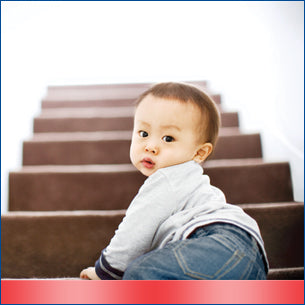Your child will reach milestones at her own rate. But if you’d like to nurture her development while creating more opportunities to interact and bond with your toddler, here are some activities you can try.
Cognitive
Milestone: Beginning to pretend play What helps: Offer a variety of child-safe household items that can serve as playthings (or toy versions of those items), like hairbrushes, telephones, and nonbreakable cups and plates. Why: Imitation is critical to learning. Your toddler will mimic the way she’s seen you use these objects, and in doing so, she learns their purpose. Next: At first your toddler engages in pretend play on her own, but soon she’ll involve others—“reading” a book to a teddy bear or offering a block that she pretends is a cracker to Grandma.
Motor
Milestone: Walking What helps: Don’t rush to your baby’s aid the second she falls down; let her figure out how to stand up and try again. Why: Early walkers fall down a lot. They also tend to get right back up. Doing this on her own will help her gain confidence and independence. Next: Hold her hand and walk with her. Once your toddler gets the hang of toddling along—in a stiff-legged fashion that relies primarily on her legs rather than her arms to stay balanced—she’ll begin to pick up speed and walk more like an older child. She may even run a bit before she turns 2.
Milestone: Stacking blocks What helps: Provide blocks for your child to build with. Show her how to get started by picking up a few and stacking them; then let her do it on her own. Why: Your toddler is gaining the hand-eye coordination and finger control to pick up and position small items. With plenty of opportunity to practice her developing skill, she’ll become increasingly adept. Her early towers will be about two to four blocks high. Next: Give her blocks of different colours and materials (wood, plastic). With practice, your 2-year-old toddler will be stacking five or six blocks.
Communication
Milestone: Speaking first words What helps: When your toddler tries to say words for body parts, household objects, and other common things, respond by repeating the correct version of the word she’s trying to say (not the baby version you may have fallen into using). For instance, if she says, “ba ba” in response to a picture of a baby in a book, you say, “Baby.” Why: Now that your toddler is beginning to use words, she needs to learn the proper names so others will understand her. Next: As her vocabulary grows, don’t make a big deal of correcting her when she makes a mistake or mispronounces a word. Just repeat the right word correctly.
Social
Milestone: Developing an attachment to a security object What helps: If your child develops an attachment to a blanket, stuffed animal, or special toy, encourage her to have the special object with her in bed, at day care, and at other times when you’ll be separated. Why: Security objects, also called transitional objects or “loveys,” stand in for you when your child feels tired or sad. They help her to become more independent as she learns ways to self-soothe and find comfort in your bond even when you’re not physically there. Next: Buy multiples of a toy or blanket you notice your child favouring, or if you can, try cutting a favoured blanket in half, so you have two. That way you’ll have a spare if the special object is lost.





